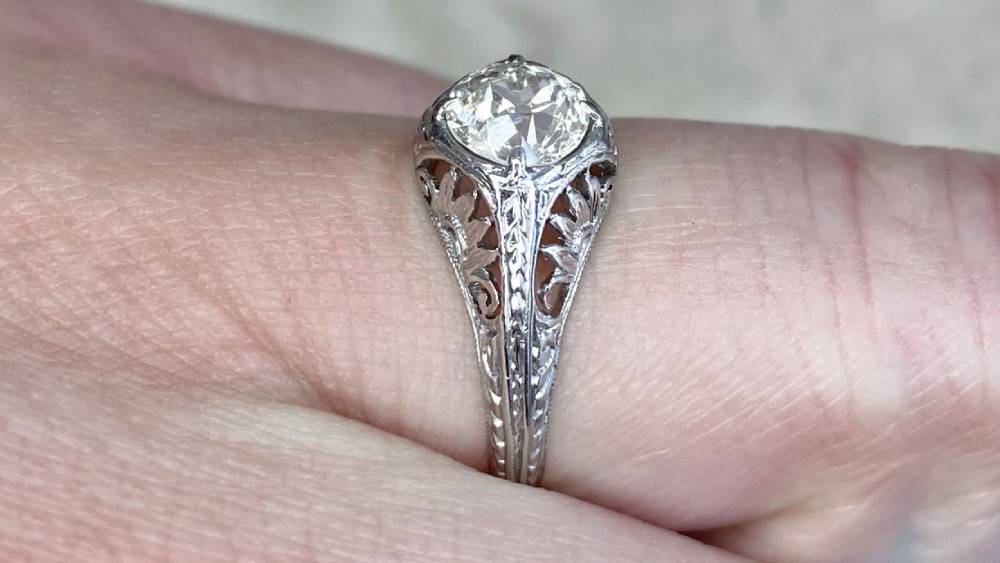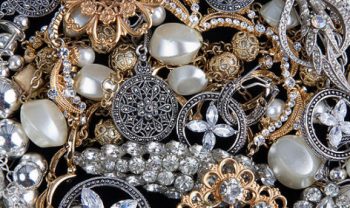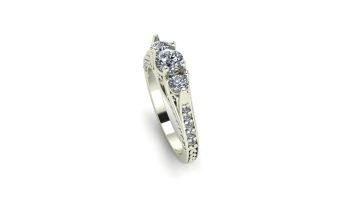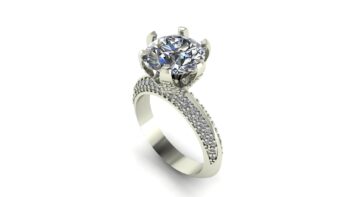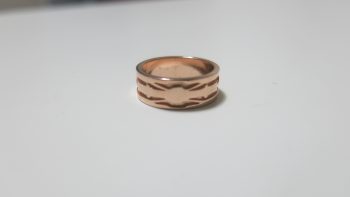What Is Filigree is not an uncommon question asked by potential jewelry buyers. Fans of antique and vintage jewelry mainly edwardian and victorian know exactly what it is. However, the rest of the public, not so much. In this post, we will discuss the history filigree and what it entails.
What Is Filigree?
Filigree jewelry is a type of jewelry that is characterized by intricate, delicate designs made from fine metal wires. It is a highly skilled craft that requires precision and attention to detail. The word “filigree” comes from the Latin words “filum,” meaning thread, and “granum,” meaning grain, which perfectly describes the technique used to create this type of jewelry. Another word for Filigree is scrollwork.
To make jewelry the old fashioned way, skilled craftsman would carefully shape and twist thin metal wires, often made of gold or silver, into intricate patterns and designs. These delicate wires are then soldered together to create a lacy, openwork design. The result is a piece of jewelry that is both elegant and intricate, with a unique and timeless beauty.
Filigree jewelry has a long history and can be found in many different cultures around the world. It has been used for centuries to create stunning pieces of jewelry, such as earrings, necklaces, bracelets, and rings. Today, filigree jewelry continues to be highly sought after for its intricate designs and exquisite craftsmanship.

History Of Filigree Jewelry
Filigree jewelry has a rich history that dates back centuries. This intricate art form involves shaping and twisting delicate metal wires into intricate designs, creating beautiful pieces that are highly valued and cherished. The origins of scrollwork jewelry can be traced back to ancient civilizations such as Egypt, Greece, and Mesopotamia, where it was used to adorn the wealthy and elite. Over time, filigree techniques spread across different cultures and became popular in various regions of the world. Today, filigree jewelry continues to be admired for its exquisite craftsmanship and timeless beauty.
One of the earliest known examples of scrollwork jewelry can be found in ancient Egypt. The Egyptians were skilled artisans and used filigree techniques to create intricate gold jewelry, often adorned with precious gemstones. These pieces were worn by both men and women, and were considered a symbol of wealth and status. The art of filigree also flourished in ancient Greece, where it was used to create stunning pieces of jewelry, such as earrings, bracelets, and necklaces. The Greeks were known for their love of beauty and their attention to detail, which is evident in the intricate designs and delicate craftsmanship of their filigree jewelry.
In the Middle Ages, scrollwork jewelry became popular in Europe, particularly in regions such as Italy and Spain. During this time, filigree techniques were refined and new designs and patterns emerged. Filigree jewelry was often worn by royalty and nobility, and was considered a sign of prestige and wealth. The Renaissance period saw a resurgence in the popularity of filigree jewelry, with artists and craftsmen experimenting with new techniques and creating elaborate pieces that showcased their skill and creativity.

How Filigree Was Created By Hand
Filigree is a delicate and intricate form of jewelry making that has been practiced for centuries. It involves the use of fine wires and tiny beads to create decorative patterns and designs. The process requires patience, precision, and a steady hand.
The first step in creating scrollwork is to select the appropriate materials. Traditionally, silver or gold wires are used, although other metals such as copper or brass can also be utilized. These wires are typically very thin, ranging from 0.2 to 0.5 millimeters in diameter. The artisan then carefully cuts and shapes the wires into the desired lengths and forms, using specialized tools such as pliers and mandrels.
Once the wires are prepared, the artisan begins the intricate process of weaving and soldering them together. This is done by carefully bending and twisting the wires into intricate patterns, often inspired by nature or geometric shapes. The wires are then soldered together using a small torch and soldering paste, creating a strong and secure bond between the wires.
The final step in creating scrollwork is the addition of tiny beads, or milgrain. These are carefully placed and secured within the wire framework, adding an extra layer of beauty and complexity to the design.

How Scrollwork Is Created Today
Scrollwork used to be very difficult and required a master jeweler to create. However, with the advent of computer-aided design (CAD), the process of creating filigree has become for less difficult, more efficient, and precise.
CAD software allows jewelry designers to create intricate scrollwork patterns with ease. The designer starts by sketching the desired pattern on a digital interface, using a stylus or mouse. The software then converts the sketch into a digital file, which can be manipulated and refined.
Once the digital file is ready, it is sent to a computer-controlled milling machine. This machine uses a small cutting tool to carve the scrollwork pattern into a block of wax or metal. The precision of the machine ensures that the pattern is accurately reproduced.
After the piece has been “grown” in wax, it can be used to create a mold. This mold is then filled with molten metal, which solidifies to form the final piece of filigree jewelry. The result is a stunning piece of jewelry that showcases the intricate beauty of filigree, created with the help of CAD technology.

We Use The Latter Method!
We use CAD to design our custom jewelry creations. In fact, you would actually be hard pressed to find someone who can create scrollwork by hand these days. But it really doesn’t matter. With the correct finishing, CAD designed scrollwork can be just as beautiful as that made by hand.
You can view our portfolio of custom engagement rings or custom pendants to look for ideas. Or you can contact us with your own idea.
